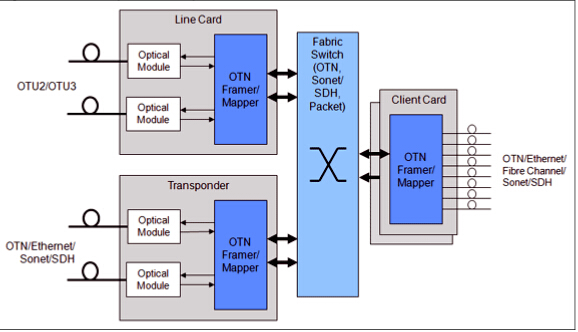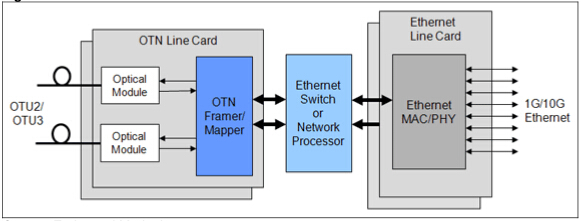For every few months, new technologies and solutions for 40G and 100G implementations will be come out. Demand for 40G and 100G transport links is growing rapidly. This paper will explore the implementation challenges, 40G/100G transport technologies and technology requirements respectively.
Time to market is the major implementation challenge for companies introducing any new technology. The first company, demonstrating and implementing 40G and 100G links, has gained significant press coverage, developed early customer engagements and won important contracts. Time to market has become more important and more challenging because the 40G/100G market moves to second and third generation implementations.
Performance still remains a key implementation challenge for 40G/100G systems. 40G/100G systems need to meet similar distance and error rates as 10G systems, which requires tighter tolerances, enhanced modulation techniques and advanced signal processing technologies.
With the changing system requirements, 40G and 100G implementations need to be flexible. The systems might be able to support DWDM, OTN and Ethernet, and customers expect the latest functionality on these expensive interfaces. Flexibility can be achieved through the use of interchangeable boards and configurable devices.
- OTN (Optical Transport Network)
Packet-optical transport brings the benefits of Sonet/SDH, DWDM and packet-based networks together, delivering a scalable and resilient transport infrastructure. OTN is the underlying transport protocol supporting 2.5G (OTU1), 10G (OTU2), 40G (OTU3) and 100G (OTU4). Many carriers are shifting to OTN for their transport network.
The following picture shows a 40G packet-optical transport platform with a central OTN, Sonet/SDH and packet fabric switch. Optical line cards connect the system to the optical transport network. Transponders, muxponders and client cards connect the system to high-rate and low-rate OTN, Ethernet, Sonet/SDH and Fibre Channel networks. The system has 10G or 40G OTN line interfaces and many OTN, Ethernet, Fibre Channel or Sonet/SDH client interfaces. Micro optical transport platforms can be built using a single integrated packet-optical transport device.

- Ethernet
In June 2010, the standards for 40GE and 100GE were ratified. The specifications support 40GE and 100GE over single-mode fiber, multimode fiber, copper cable (up to 7m), and a system backplane. Ethernet can be sent over a fiber cable or transported over OTN.
The picture below shows a carrier Ethernet switch/router (CESR) with 10G/40G OTN line cards and 1G/10G Ethernet client interfaces. This system utilizes a mixture of OTN framer/mapper functions, Ethernet switch or network processor and multiple Ethernet MAC/PHY devices.

- Optical Modules
Optical modules are widely used in telecom transport systems. The QSFP+ pluggable module is widely used for 40G applications. CFP, CFP2, and CFP4 optical modules are widely used for 100G applications.
High-speed serial I/O is a critical requirement for devices used in 40G/100G implementations. And 40G/100G systems require high-performance processing and switching functions. Digital signal processing is required for 100G coherent receiver implementations. Most systems also require switching, packet processing and control plane processor. 40G/100G systems require high-performance packet processing. This can be implemented using a dedicated network processor ASSP or by using proprietary or third-party IP to develop a FGPA or ASIC-based solution.
40G/100G networking presents some particular challenges for system developers. As stated above, time to market, performance and flexibility are the key parameters for implementation challenges. OTN, Ethernet and optical modules (QSFP+ module for 40G, CFP for 100G) are the necessary 40G/100G transport technologies.